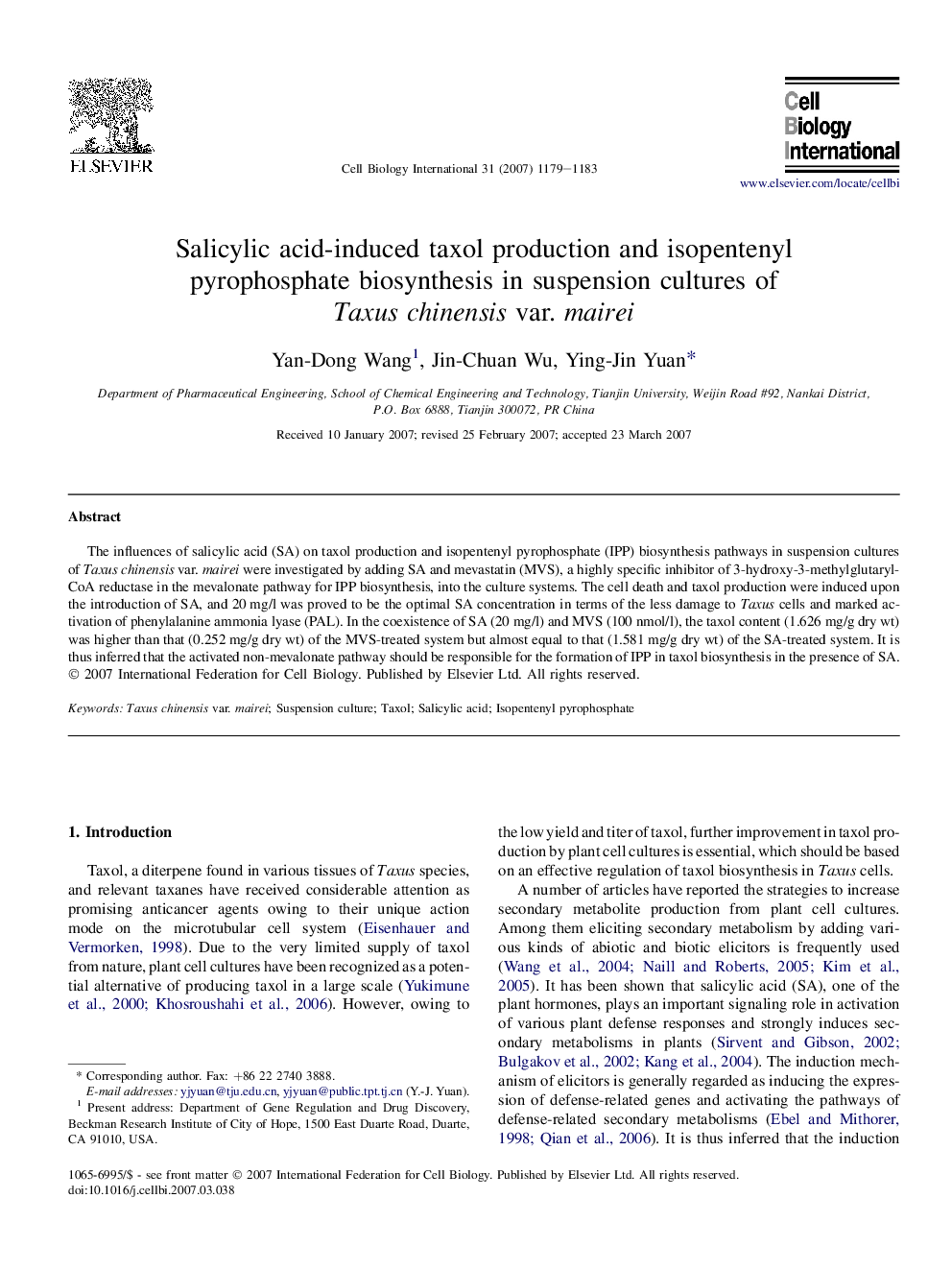| Article ID | Journal | Published Year | Pages | File Type |
|---|---|---|---|---|
| 2067629 | Cell Biology International | 2007 | 5 Pages |
Abstract
The influences of salicylic acid (SA) on taxol production and isopentenyl pyrophosphate (IPP) biosynthesis pathways in suspension cultures of Taxus chinensis var. mairei were investigated by adding SA and mevastatin (MVS), a highly specific inhibitor of 3-hydroxy-3-methylglutaryl-CoA reductase in the mevalonate pathway for IPP biosynthesis, into the culture systems. The cell death and taxol production were induced upon the introduction of SA, and 20Â mg/l was proved to be the optimal SA concentration in terms of the less damage to Taxus cells and marked activation of phenylalanine ammonia lyase (PAL). In the coexistence of SA (20Â mg/l) and MVS (100Â nmol/l), the taxol content (1.626Â mg/g dry wt) was higher than that (0.252Â mg/g dry wt) of the MVS-treated system but almost equal to that (1.581Â mg/g dry wt) of the SA-treated system. It is thus inferred that the activated non-mevalonate pathway should be responsible for the formation of IPP in taxol biosynthesis in the presence of SA.
Related Topics
Life Sciences
Biochemistry, Genetics and Molecular Biology
Biophysics
Authors
Yan-Dong Wang, Jin-Chuan Wu, Ying-Jin Yuan,
